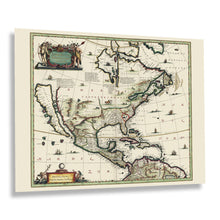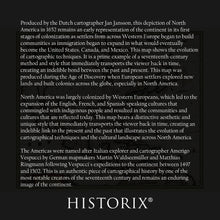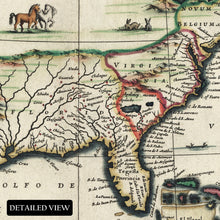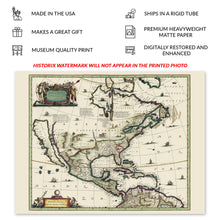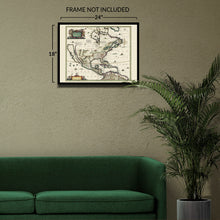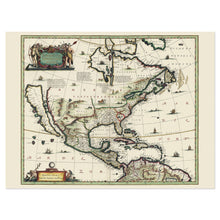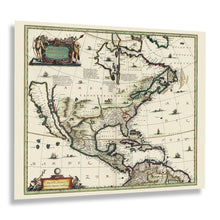
Feature Points
- VINTAGE MAP REPRODUCTION: You'll love this high quality historic reproduction of 1652 North America Wall Map Poster. Our museum quality prints are archival grade, which means it will look great and last without fading for over 100 years. Our print to order maps are made in the USA and each map is inspected for quality. This beautiful artwork is a perfect addition to your themed decor. Vintage maps look great in the home, study or office. They make a perfect gift as well.
- MUSEUM QUALITY: This high quality map print will be a great addition to your vintage-themed wall. Don't waste money on cheap-looking, thin paper posters. We use thick, fine art print quality matte paper. Our professional's choice matte paper displays artwork in high detail without glare. The color is vibrant and text is easy to read. When framed, this map looks absolutely stunning.
- A LOOK BACK AT HISTORY: This is an impressive, historic reproduction of 1652 Map of North America Poster. A true piece of history. See our product description section for more fascinating information about this historic map and its significance.
- READY TO FRAME: This print includes a 0.2 inch border for a perfect frame fit and look. Our maps are designed to fit easy-to-find standard frame sizes, saving you money from having to pay for a custom frame. Each map is inspected for quality and shipped in a rigid tube.
- HISTORIX: We love history and art. Sometimes old maps have tears, folds, separations and other blemishes. We digitally restore and enhance maps while keeping its historical character. All our maps are proudly made in the USA. Customers all over the world love our vintage maps and we know you will too.
Additional Information
Produced by the Dutch cartographer Jan Jansson, this depiction of North America in 1652 remains an early representation of the continent in its first stages of colonization as settlers from across Western Europe began to build communities as immigration began to expand in what would eventually become the United States, Canada, and Mexico. This map shows the evolution of cartographic techniques. It is a prime example of a seventeenth-century method and style that immediately transports the viewer back in time, creating an indelible bond between the past and present. This map was produced during the Age of Discovery when European settlers explored new lands and built colonies across the globe, especially in North America.
North America was largely colonized by Western Europeans, which led to the expansion of the English, French, and Spanish-speaking cultures that commingled with indigenous people and resulted in the communities and cultures that are reflected today. This map bears a distinctive aesthetic and unique style that immediately transports the viewer back in time, creating an indelible link to the present and the past that illustrates the evolution of cartographical techniques and the cultural landscape across North America.
The Americas were named after Italian explorer and cartographer Amerigo Vespucci by German mapmakers Martin Waldseemüller and Matthias Ringmann following Vespucci's expeditions to the continent between 1497 and 1502. This is an authentic piece of cartographical history by one of the most notable creators of the seventeenth century and remains an enduring image of the continent.








